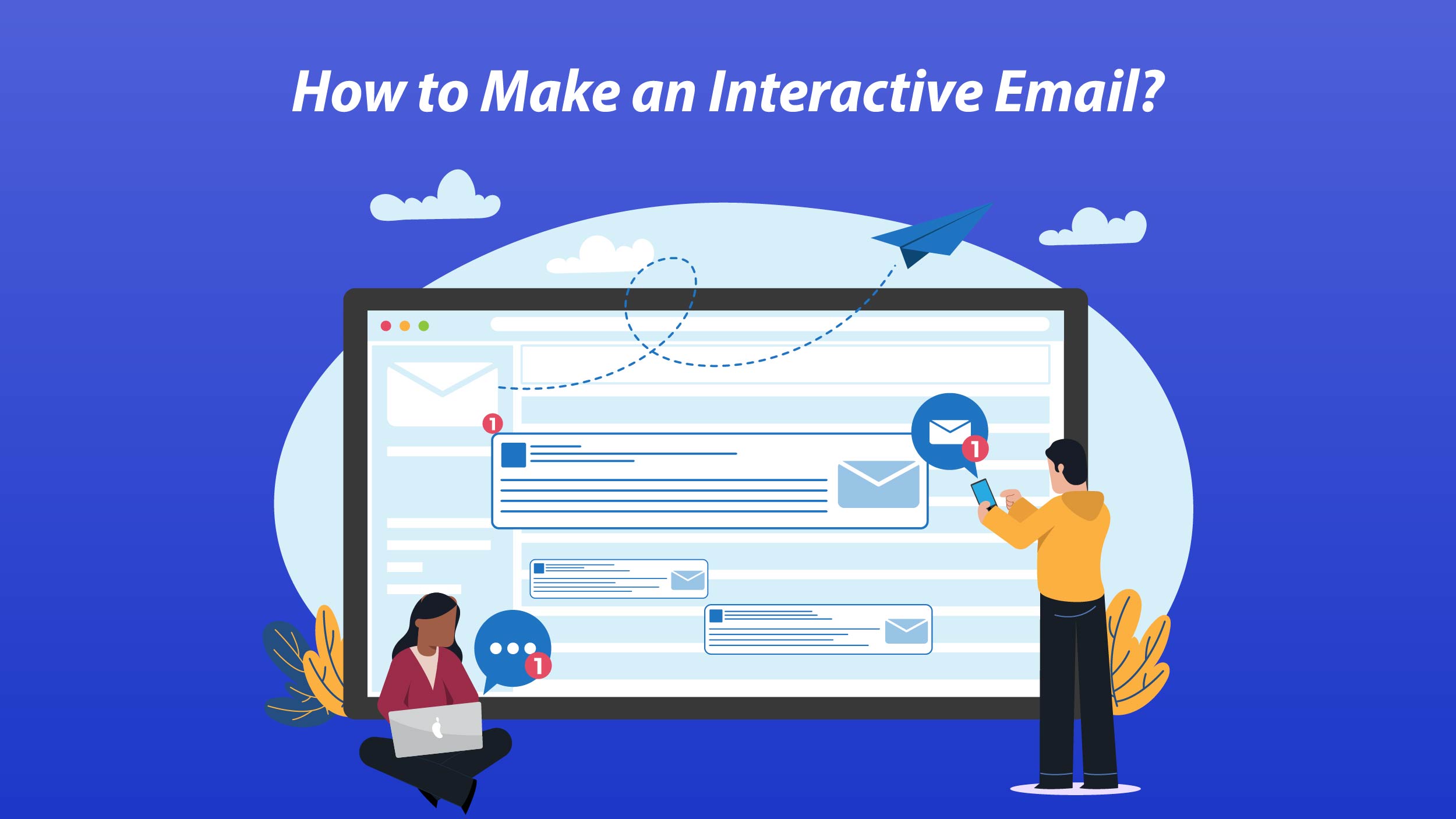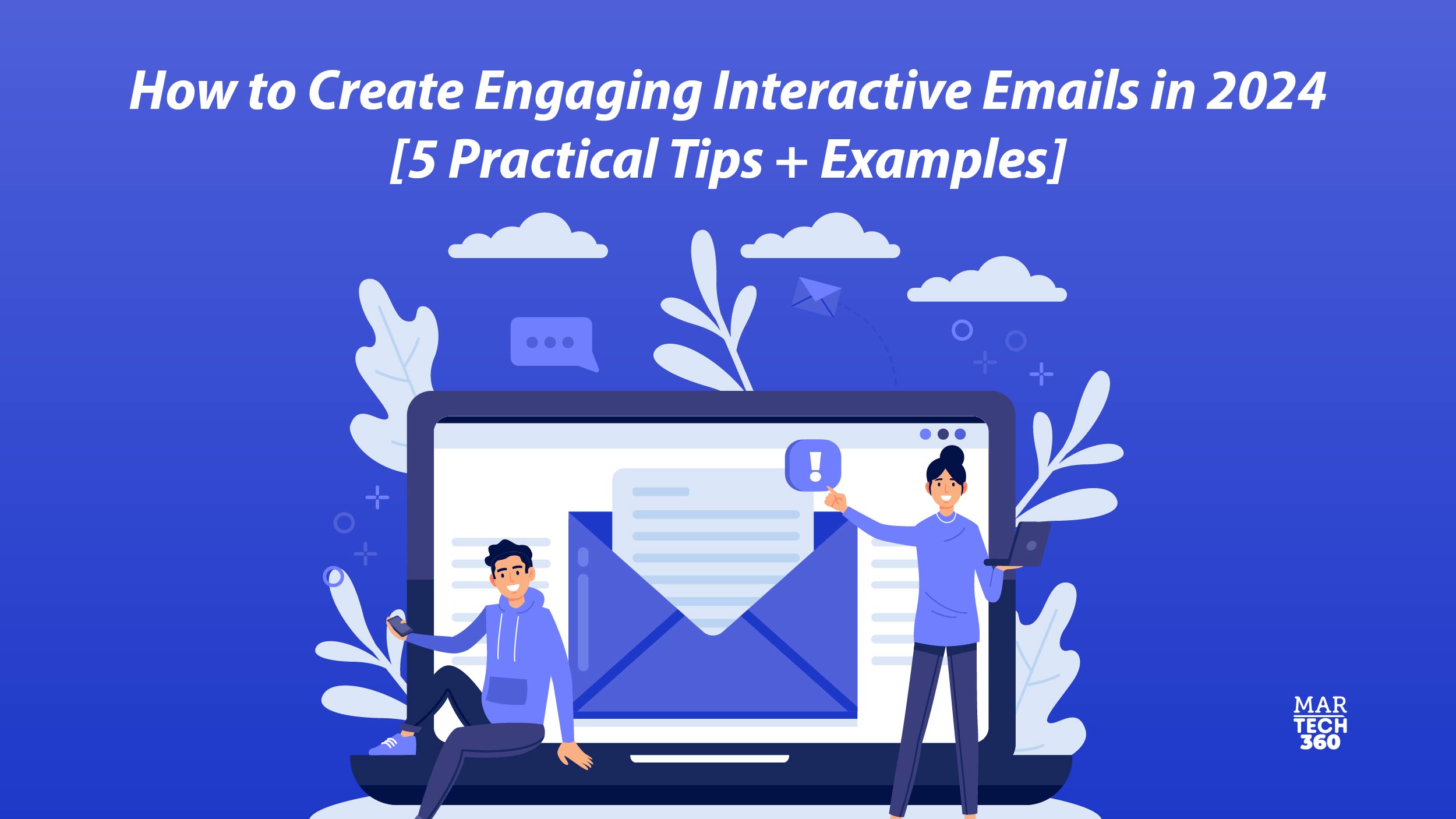The digital landscape is witnessing various trends in email marketing. An abundance of information and shorter attention spans have changed how businesses communicate via email. According to research, the average human attention span is just 8.25 seconds, which is even shorter than the 9-second attention span of a goldfish. An emerging trend is the use of interactive emails to enhance engagement and collaboration. As over 66% of marketers acknowledge its effectiveness, let’s delve into what an interactive email is and how you can benefit from it.
What is an Interactive Email?
 An interactive email has elements needing active involvement from the recipient. These can be simple, like clicking buttons or links, or more advanced, like surveys, quizzes, image carousels, scratch-off effects, and embedded videos.
An interactive email has elements needing active involvement from the recipient. These can be simple, like clicking buttons or links, or more advanced, like surveys, quizzes, image carousels, scratch-off effects, and embedded videos.
These emails aim to boost user engagement, offer a personalized experience, and prompt recipients to take action within the email itself. Marketers use these elements to improve click-through rates, increase conversions, and provide more engaging content to subscribers.
How to Make an Interactive Email?

Utilizing interactive elements in email content can leave a lasting impression on your subscribers. It transforms communication into a two-way process, involving your customers in the conversation and creating more sales opportunities.
Let’s learn about this with practical examples:
Countdown Timers
- Purpose: They generate excitement for upcoming events, sales, or subscription expirations.
- Example Scenario: Announcing a sale.
Implementation
- Use a tool like Sendtric for customized HTML code with a live or static countdown
- Set the date and time
- Customize the design
- Copy the code onto your sales email template
While it may seem like extra effort, the results, including increased sales and click-through rates, make this interactive upgrade worthwhile for your regular emails.
Also Read: Programmatic Native Advertising: What You Need to Know
GIF
GIFs bring an instant spark to your emails, making them more fun and engaging. They’re like tiny, powerful stories that convey a message without using many words, perfect for creating amusing and interactive emails.
Now, here are two easy ways to create a GIF for your email:
- DIY Design: Use tools like Adobe Photoshop or Picsart to stitch pictures or videos together and make a loop.
- GIPHY Magic: Utilize tools like GIPHY to turn images or videos into interactive GIFs. You can even add text and seamlessly integrate them into your email newsletters.
Once your GIF is ready, here’s what you do next:
- Create a URL for your saved GIF and copy it.
- In your email, click on “Insert image” from the menu.
- Paste the URL, and you’re all set!
Remember, keep your GIF size small for quicker loading. Besides that, adding text to the GIF saves you from creating new content for your email – it’s that simple!
Ratings
Ratings are a straightforward way to learn about your brand’s market value with minimal effort. Stripo offers a variety of interactive email templates and tools.
Here’s how you can make your emails interactive using star ratings:
After a purchase or when receiving feedback, promptly follow up with a brief star rating survey directly via email. Let’s see how a brand effectively uses star ratings:
Post-Purchase Thank-You
- Send a thank-you note after each purchase, inviting customers to rate their experience on a scale of one to five stars.
- This quick feedback is invaluable for improving user experience and enhancing customer retention.
To embed a star-rating option in your email newsletter, some basic coding knowledge is required. However, tools like Nicereply, Fera, and Wufoo simplify this process. Once your link is ready, proceed as follows:
- In your email template, locate the </> symbol and paste the link you’ve created.
- Modify the underlying code with your thank-you message, replacing it with the new ones you’ve designed.
Pro Tip: Create two thank-you notes, one for ratings between one and three stars and another for three stars and above. Ensure alignment and add any necessary content.
Alternatively, you can create five different star images, linking each to a distinct thank-you note. For a seamless experience, consider hiring a professional coder to create the code. This ensures that your customers can easily provide ratings without facing any hassles.
Quizzes and Surveys
Using multi-question surveys and quizzes in emails is an effective way to engage without overwhelming recipients. They are considered a top interactive content type for several reasons:
- Customer feedback: It allows you to gather valuable feedback from customers, aiding in customer retention.
- Service expansion: Helps in creating additional services to attract a broader audience.
- Product hype: Generates excitement and anticipation for upcoming products.
- Enhanced communication: Smoothens communication between you and your customers.
While surveys are powerful, they can be tricky if not approached correctly. The goal is to keep clients engaged without making it feel like they’re playing a lengthy game of 20 questions.
Interactive Signatures
Email signatures, typically found at the end of emails, display branding information. However, when these signatures become interactive, they transform into valuable tools for the customer’s buying journey.
These signatures can go beyond static information and include:
- Calls to action
- Product information
- Special offers
- Links to your website
The beauty of interactive email signatures lies in their simplicity to incorporate and their significant impact on increasing conversions. Notably, they are mobile-adaptive, ensuring accessibility to a broader audience, thereby enhancing visibility and customer engagement. You can use tools like Salesmate’s free email signature generator to effortlessly create impressive email signatures.
Winding Up
Interactive email offers a personalized and effective way to connect with customers, enhancing user engagement, conversion rates, and lead generation. It has a lighter footprint on mobile devices and brings the functionality of a website or landing page to users’ mailboxes. However, there are several challenges associated with the deployment of these emails, such as AMP technology not being supported by all email clients and the labor-intensive process of coding and testing interactive emails.


Comments are closed.